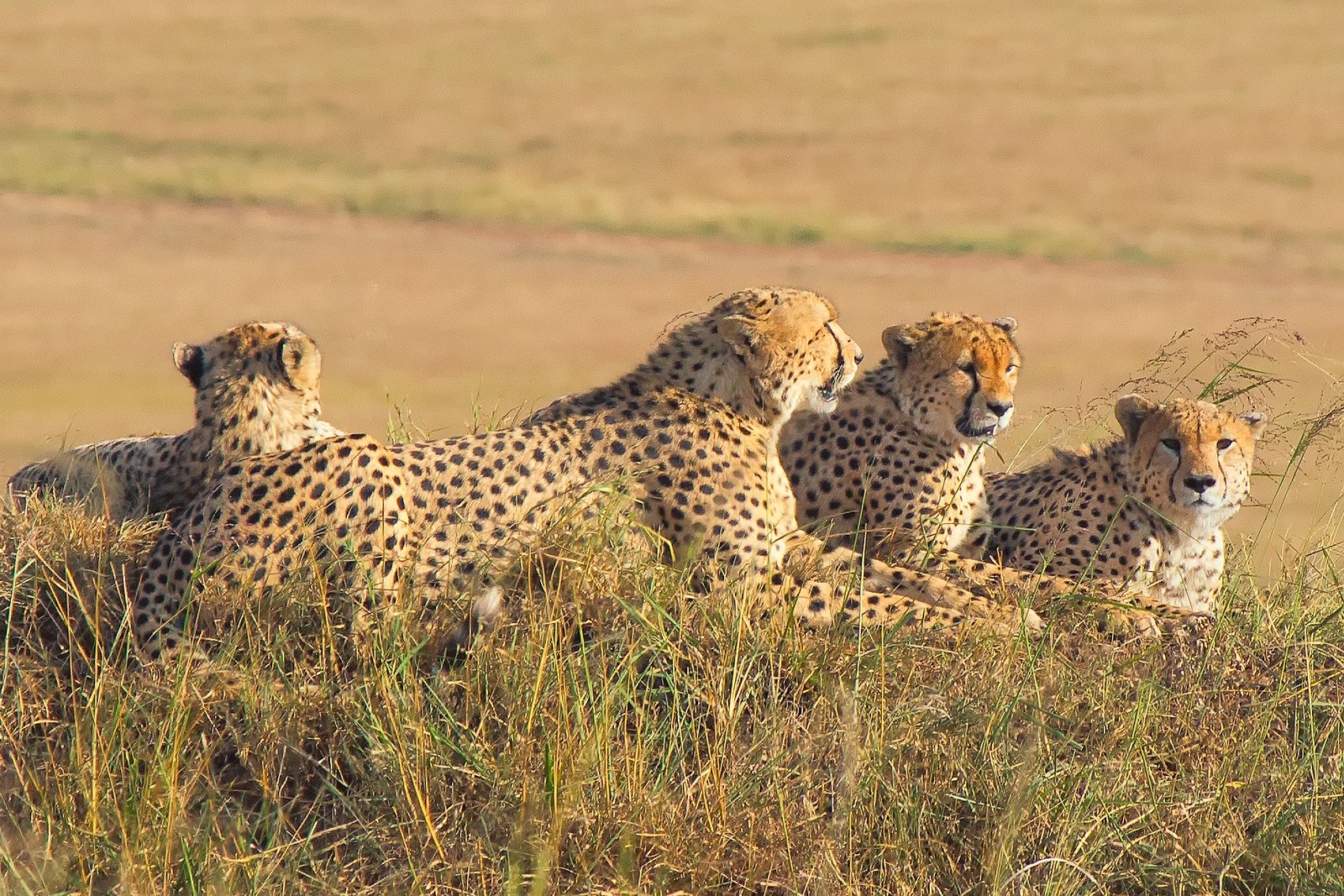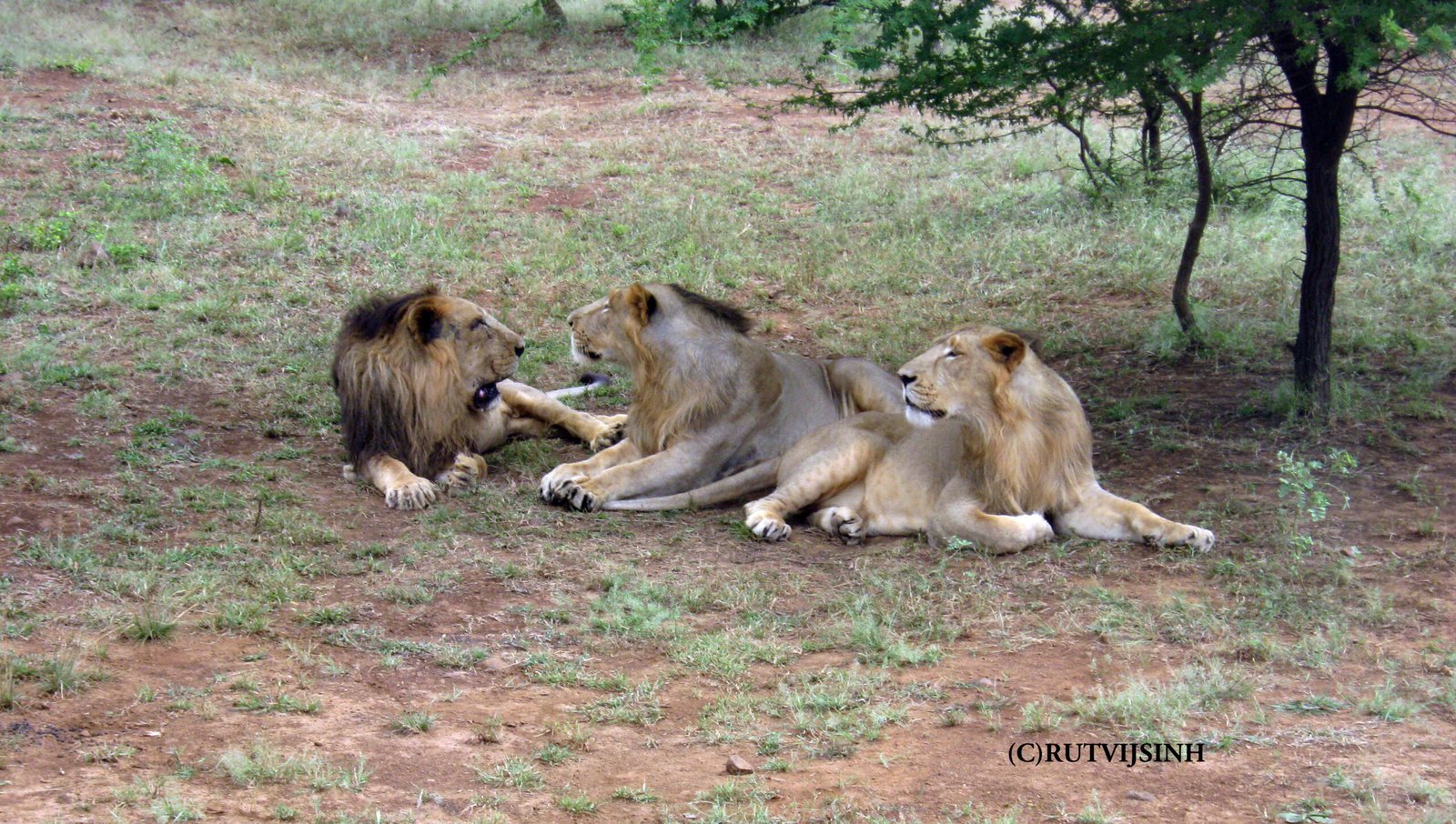What happens when the world’s most powerful felines decide to team up? Most big cats are famous for prowling alone, but a select few have discovered that sometimes, there’s strength in numbers. In this wild gallery, get ready to meet the surprising big cats who break the solo mold and find out why their unusual alliances are so rare in the animal kingdom. Which whiskered coalition would you join?
The Lion’s Brotherhood: Kings Don’t Always Roam Alone

Lions are perhaps the ultimate poster cats for coalitions. Unlike their solitary cousins, male lions form powerful brotherhoods known as coalitions—often made up of brothers or close relatives, but sometimes including unrelated males. These alliances give them a serious edge: together, they can take over and keep prized territories, defend against rivals, and protect their pride’s cubs. Think of it as a royal security team! But here’s the catch—these coalitions aren’t endless; power struggles and betrayals can break them apart. Still, seeing a group of male lions striding side-by-side is like watching a living, breathing superhero squad.
Cheetah Coalition: Speedsters Who Stick Together

Cheetahs are best known for their lightning-fast sprints, but did you know that male cheetahs often hunt in coalitions too? Usually, these teams are brothers who stay together for life, sharing territory and hunting duties. By working as a team, they can tackle larger prey and defend against bigger predators. It’s a clever strategy in the open savannas, where danger lurks everywhere. Female cheetahs, though, are fiercely independent—so these brotherly bands are a rare exception in the cheetah world. Imagine a trio of race cars, turbo-charged and working in perfect sync!
Coalitions: Nature’s Secret Clubhouses

Why do some big cats form coalitions while others go it alone? The answer lies in a mix of survival, strategy, and sheer necessity. In harsh environments, teaming up can mean the difference between ruling a territory or losing it all. But trust is tough to come by in the wild; only a few species have cracked the code to successful teamwork. These rare alliances are like secret clubhouses—invitation only, and not everyone gets to join.
Tiger Solo: A Rare Glimpse of Cooperation

Tigers are the classic lone wolves of the big cat world, fiercely territorial and independent. But every now and then, researchers spot young male tigers—usually brothers—traveling and hunting together for a short time before they claim their own land. This fleeting coalition is almost like a tiger bachelor road trip. Soon, though, their solitary instincts kick in, and it’s back to one tiger, one territory. These brief partnerships remind us just how rare true coalitions are among big cats.
Jaguar: Lone Shadows in the Jungle

Jaguars are jungle phantoms, masters of stealth and solitude. Unlike lions or cheetahs, jaguars almost never form coalitions. On rare occasions, you might see a mother with her nearly grown cubs sharing a meal or a pair of siblings temporarily wandering together, but true adult coalitions are virtually unheard of. Jaguars’ dense rainforest homes make teamwork tricky and unnecessary—they’re built for solo missions, not group adventures.
Sneaky Snow Leopards: Secret Sibling Teams

Snow leopards are famously elusive, but sometimes camera traps capture something extraordinary: young male siblings forming temporary coalitions as they leave their mother’s care. In the frozen heights, these partnerships help them survive brutal conditions and fend off threats. But as soon as they’re strong enough, it’s back to the life of a solitary mountain ghost. These rare teams are like a winter survival boot camp—short-lived but vital.
Leopard Partnerships: Only for Family

Leopards are fiercely independent, but there’s a twist: siblings, especially brothers, may stick together after leaving their mother. These duos roam and hunt together, learning the ropes before eventually parting ways. It’s a short-term coalition, more like a family apprenticeship than a lifelong bond. Adult leopards, though, want nothing to do with coalitions. For these spotted cats, the partnership is a brief stepping stone to a lifetime of solo prowling.
Puma Pairs: Mother and Cubs in the Americas

Pumas, also called cougars or mountain lions, are the ultimate stealth solo artists. But for a while, puma mothers and their almost-grown cubs travel and hunt together, teaching vital skills. Sometimes, siblings stick together a bit longer on their own. Yet, true adult coalitions are practically non-existent. For pumas, teamwork is just a phase—once they’re ready, it’s every cougar for themselves in the wild West.
Coalition Perks: Power in Numbers

Why would a big cat risk sharing food and space? Simple: the benefits can be huge. In coalitions, members can take down bigger prey, defend territories, and chase off rivals. It’s a wild version of “the buddy system.” For species like lions and cheetahs, these perks can mean longer reigns and better survival. In the world of big cats, sometimes friendship really is magic—at least for a while.
Backstabbing and Betrayal: The Downside of Teamwork

Coalitions aren’t all purrs and cuddles. Power struggles, jealousy, and shifting alliances can tear groups apart. In lion coalitions, for example, old friends can become fierce rivals overnight if the balance tips. Even cheetah brothers sometimes fight over leadership. It’s like a dramatic reality TV show—except with claws and teeth. These tensions remind us why most big cats prefer to go solo.
Rare Female Coalitions: The Lioness Exception

Female big cats almost never form coalitions—except lions. Lionesses create lifelong sisterhoods within their pride, hunting and raising cubs together. This unique setup makes lion prides some of the most complex and cooperative societies in the animal kingdom. For most other species, girls’ night out just isn’t on the menu.
Territory Tactics: Holding Ground Together

Coalitions give big cats a leg up when it comes to territory. Defending a patch of land solo is tough, especially with lurking rivals. But a coalition can dominate a much larger area, keeping intruders at bay. This teamwork helps explain why lions and cheetahs have managed to carve out impressive strongholds—even in dangerous, crowded landscapes.
Coalitions vs. Prides: What’s the Difference?

It’s easy to mix up coalitions and prides, but they aren’t the same. A coalition is usually a group of males, while a pride (in lions) is a family unit with females, cubs, and a few males. Coalitions might control several prides, but they’re not the same as being part of the main family. Think of coalitions as exclusive squads working behind the scenes.
Youth in Coalitions: Training for the Big League

For many big cats, coalitions start as sibling teams. Young males stick together to practice hunting, defend themselves, and learn the ropes, much like rookies training for the major leagues. These alliances help them survive the toughest years—but adulthood usually means going their separate ways, ready to rule their own territories.
Competition and Cooperation: Walking a Fine Line

Coalitions are a masterclass in balancing competition and cooperation. Members must work together to succeed, but they’re always aware that one day, they could become rivals. It’s a delicate dance—one wrong move, and best friends can turn into bitter enemies. No wonder coalitions are so rare!
Coalition Sizes: The Magic Number

How many cats make a coalition? In lions, coalitions can be as small as two or as big as seven, but three or four is the sweet spot. Cheetah coalitions are usually pairs or trios. Bigger groups can be tough to manage—after all, sharing food and power isn’t easy. It’s like the perfect band: too many members, and the harmony falls apart.
Communication: Secret Signals and Cat Chatter

Coalition members rely on subtle signals—growls, grooming, and body language—to keep the peace and coordinate hunts. These secret codes help them stay in sync, avoid fights, and plan ambushes. It’s a bit like having your own group chat, but with tail flicks and ear twitches instead of emojis.
Hunting Together: Double Trouble for Prey

Big cats in coalitions can pull off hunting feats solo cats can only dream of. Lions use coordinated ambushes, while cheetah brothers take down larger antelope by working as a team. The result? More food with less risk. For their prey, it’s double trouble—no wonder antelopes sleep with one eye open!
Coalitions and Family Ties: Blood Is Thicker

Most coalitions start with family—brothers or cousins—but sometimes, unrelated males join up for mutual benefit. Blood ties help keep the peace, but when outsiders join, things can get tense. In the wild, trust is everything, and coalitions are strongest when the bonds run deep.
Life Span in Coalitions: United We Stand, Divided We Fall

Coalition life can mean a longer, more successful reign—at least for a while. Male lions in coalitions often keep control of prides much longer than single males. But nothing lasts forever. Eventually, age, injuries, or newcomers break up the group, and it’s back to the struggle for survival, solo-style.
Why Are Coalitions So Rare? The Lone Cat’s Dilemma

Most big cats are fiercely territorial by nature, making teamwork tough. Sharing food and space means risking starvation or betrayal. Only species that gain clear benefits—like defending a territory or hunting big prey—bother forming coalitions. For everyone else, it’s just not worth the risk.
Coalition Legends: Famous Teams in the Wild

Some coalitions have become legends—like the infamous Mapogo lions of South Africa, a brotherhood that ruled their domain with iron paws for years. Their dramatic rise and fall became the stuff of documentaries, showing both the power and peril of big cat teamwork. These stories capture our imagination, blending drama, danger, and wild loyalty.
Playful Bonds: Youngsters Learning the Rules

Before they become full-fledged coalition members, young big cats spend hours play-fighting, chasing, and grooming each other. This playtime isn’t just fun—it’s serious practice for the challenges of adult coalition life. Watch a group of lion cubs wrestling, and you’ll see future kings in training.
Coalitions in Danger: Threats from Humans and the Wild

Habitat loss, hunting, and shrinking prey threaten the future of coalitions. As territories disappear, it’s harder for big cat teams to survive. Conservationists are working to protect these rare alliances, recognizing that coalitions are a sign of healthy, thriving cat populations.
Imagine the Team: Which Coalition Would You Join?

If you could pick your place in a big cat coalition, would you run with the cheetah speedsters, rule with the lion kings, or brave the snowy heights with snow leopards? Each coalition has its own style, drama, and secrets—just like the best teams in any story. Who knows? Maybe your dream squad is waiting out there, somewhere in the wild.

Suhail Ahmed is a passionate digital professional and nature enthusiast with over 8 years of experience in content strategy, SEO, web development, and digital operations. Alongside his freelance journey, Suhail actively contributes to nature and wildlife platforms like Feline Fam, where he channels his curiosity for the Feline into engaging, educational storytelling.
With a strong background in managing digital ecosystems — from ecommerce stores and WordPress websites to social media and automation — Suhail merges technical precision with creative insight. His content reflects a rare balance: SEO-friendly yet deeply human, data-informed yet emotionally resonant.
Driven by a love for discovery and storytelling, Suhail believes in using digital platforms to amplify causes that matter — especially those protecting Earth’s biodiversity and inspiring sustainable living. Whether he’s managing online projects or crafting wildlife content, his goal remains the same: to inform, inspire, and leave a positive digital footprint.






